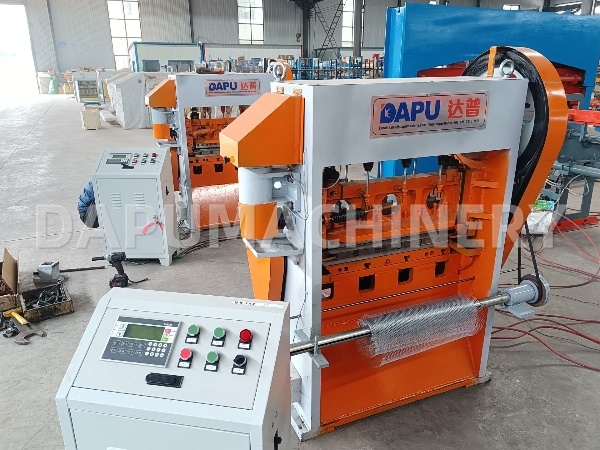
What Is an Expanded Metal Machine and How Does It Work?
Category:News
Author:
Source:
Add time:2025-04-23 09:29
The Complete Guide for Latin American Industrial Buyers
Expanded metal mesh is a cornerstone of modern construction and manufacturing, offering strength, ventilation, and cost-efficiency. But how is this material made? Let’s break down the process and explore why DAPU machines dominate Latin America’s market.

The Science Behind Expanded Metal
Unlike perforated metal (which punches holes, wasting material), expanded metal machines slit and stretch metal sheets to create diamond-shaped patterns. This process retains 95% of the original material, making it ideal for cost-sensitive markets like Mexico and Brazil.
Step-by-Step Operation
Material Feeding
Coils of steel, aluminum, or stainless steel (0.5–12mm thickness) are loaded into the uncoiler.
DAPU’s DP-16T model features a dual-arm uncoiler for heavy 12mm steel coils – critical for mining equipment in Chile.
Slitting & Stretching
Precision blades cut parallel slits into the sheet.
Hydraulic arms stretch the sheet vertically, forming uniform diamond patterns.
Key innovation: DAPU’s DP-25T uses servo-driven stretching for 0.1mm precision, reducing material warping.
Customization
Mesh parameters (strand width, hole size) are adjusted via touchscreen PLC.
Example: A Colombian client uses DP-63T to switch between 15x40mm (fencing) and 5x10mm (decorative screens) in 8 minutes.
Why Latin American Manufacturers Choose DAPU
Energy Savings
DP-100 consumes 18kW/h – 25% less than traditional machines. For a Peruvian factory running 3 shifts, this saves $8,400/year in electricity.
Automation for Labor Efficiency
DP-25T’s full-auto mode requires only 1 operator, reducing labor costs by 40% (vs. 3 workers for semi-auto models).
Tropical Climate Adaptations
Anti-rust coatings on DP-63T’s blades withstand 80% humidity – a must for coastal Ecuadorian plants.
Pro Tip: For small workshops, DAPU’s DP25-6.3 Expanded Metal Mesh Machine, the auto model offers pay-as-you-go production with minimal training.
Recommend News




